Car-Free Kea: A Cycladic Island Escape Near Athens
Just an hour from Athens, Kea...
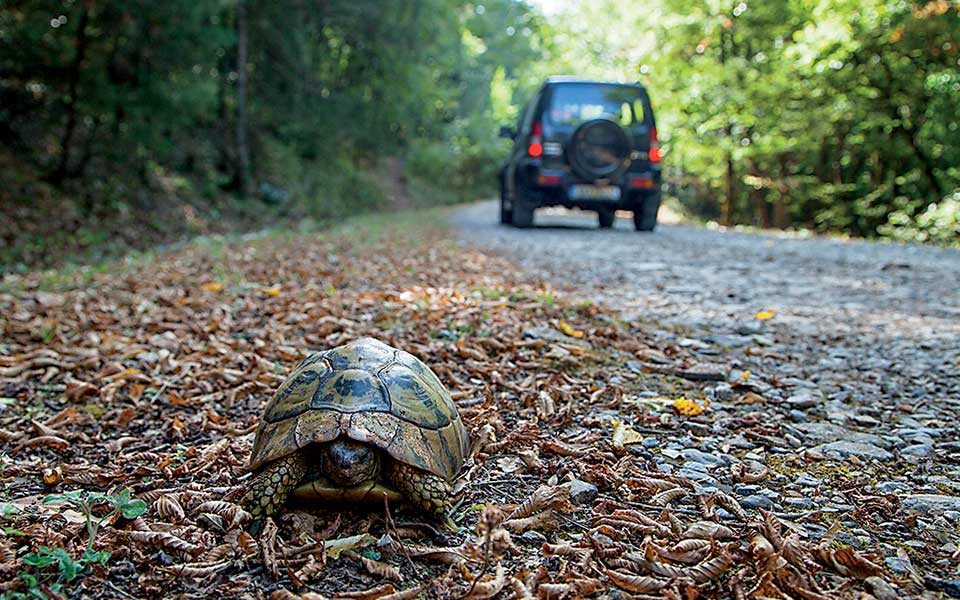
On a country road
© Olga Charami
The gateway to Olympus
Located at the end of the Enipeas Gorge and a short drive from the coast, this small mountain town is where most visitors to the area come to stay. With guesthouses, restaurants and stores selling climbing equipment, it’s a great all-year destination.
The main town square, with its fountain and the Church of Aghios Nikolaos, is where Litochoro’s older generation likes to gather in the mornings, enjoying the view of the Enipeas River. After a day of climbing, however, most visitors prefer to join the town’s younger residents at the livelier cafés and meze joints in the area known as Lakkos.
The name might be a mouthful, but Gastrodromio en Olymbo (Tel. (+30) 23520.213.00) is one of the best restaurants in town, serving excellent Greek cuisine and an extensive selection of wines.
Before heading up the mountain, stop by the Olympus National Park Information Center (Tel. (+30) 23520.830.00, olympusfd.gr, open Mon-Fri 09:00-16:00) and let the center’s 3-D imaging system, touchscreens and comprehensive exhibition give you a better idea of the mountain’s history, natural treasures, trails and peaks.
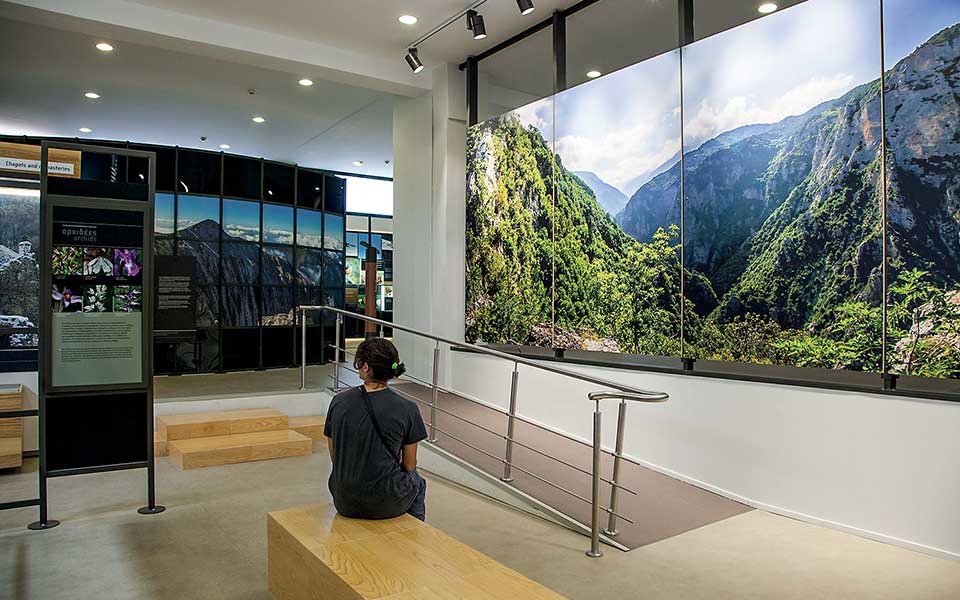
Olympus National Park of Information Center
© Olga Charami
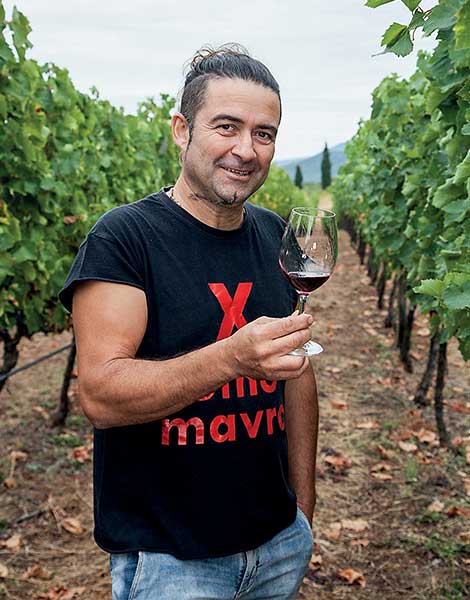
Apostolis Courtis
© Olga Charami
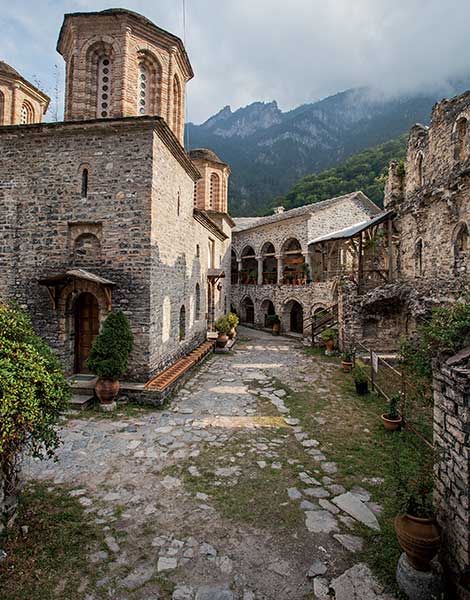
Aghios Dionysios Monastery
© Olga Charami
Nectar of the mortals
The Courti Estate’s organic vineyard and winery in Rachi, in the northern foothills of Mount Olympus, is an idyllic location and the best spot to sample some wines made of native grape varieties such as Assyrtiko, Vidiano, Agiorgitiko and Xinomavro, and to enjoy international classics like Trebbiano, Syrah, Merlot and Cabernet Sauvignon.
Tastings, which are held in the lovely rustic setting of the main building, comprise seven labels and are accompanied by nibbles of sourdough bread, handmade sausage and goat’s cheese.
Mountain mystic
Dionysios was a monk who spent his life in the caves of Mt Olympus, modestly refusing all honors offered to him and enjoying great popularity among the locals. The monastery he founded in the 16th century in Prionia (some 20km from Litochoro) is nestled in the wooded hills and has become a popular attraction.
Its charming restored buildings and well-tended garden, along with a refectory where visitors are often treated to a spoon sweet and a glass of cold water, give it the feel of a true refuge.
There are two trails into the Enipeas Gorge that start at its parking lot: one is an easy ten-minute walk to a pretty waterfall, while the other goes to one of the caves where the saint once lived.
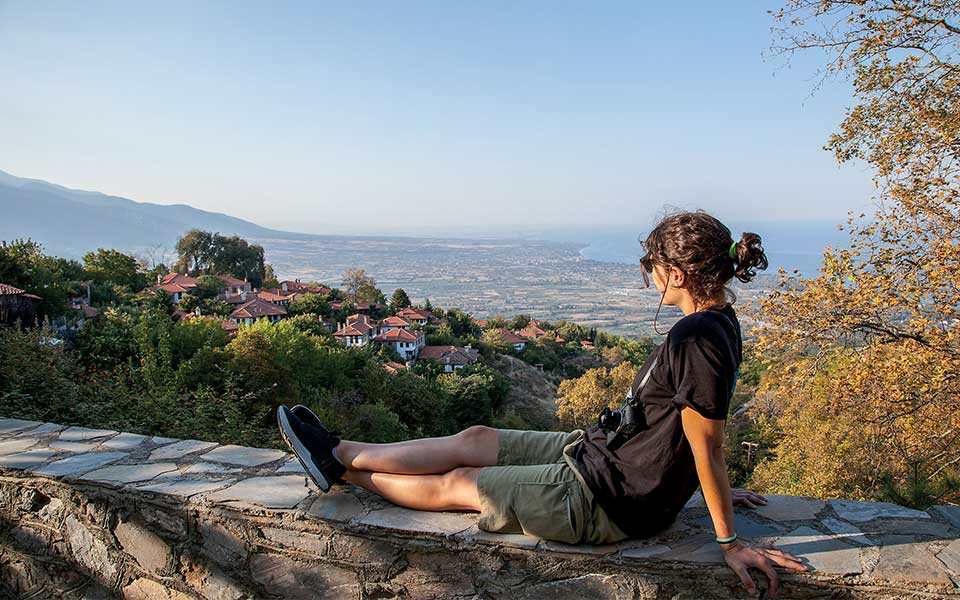
Looking out at Palaios Panteleimonas
© Olga Charami
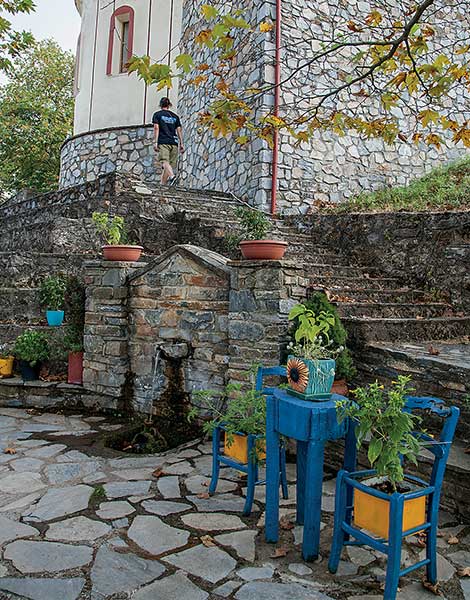
Palioi Poroi
© Olga Charami
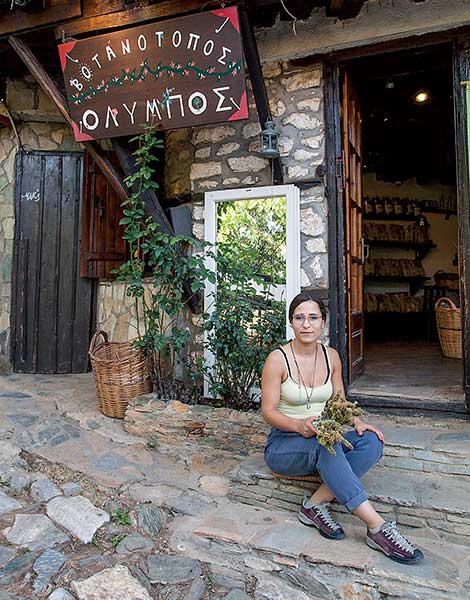
Herbal shop at Palaios Panteleimonas
© Olga Charami
A picturesque place
Restored stone houses with red-tiled roofs, quaint car-free streets and a pretty square with plane trees, tavernas and shops where you can purchase herbs, local products and souvenirs: built at an elevation of 500m with a view down to the sea, Palaios Panteleimonas is the loveliest village in the area and the most developed in terms of tourism.
Its “frozen-in-time” charm is the result of having been abandoned by its residents (who relocated further downhill) in the 1950s, leaving the original architecture unchanged. This was also the case in the two neighboring villages of Palioi Poroi and Palaia Skotina, though those cannot offer quite the same amenities.
Palioi Poroi has an attractive main square with a taverna and a stone fountain, while Palaia Skotina (accessible by dirt road) is best known for its 19th-c. church, dedicated to the Dormition of the Virgin Mary.
If you enjoy white-knuckle adventure, try paragliding with Olympic Wings (Tel. (+30) 23520.417.41) at Neos Panteleimonas.
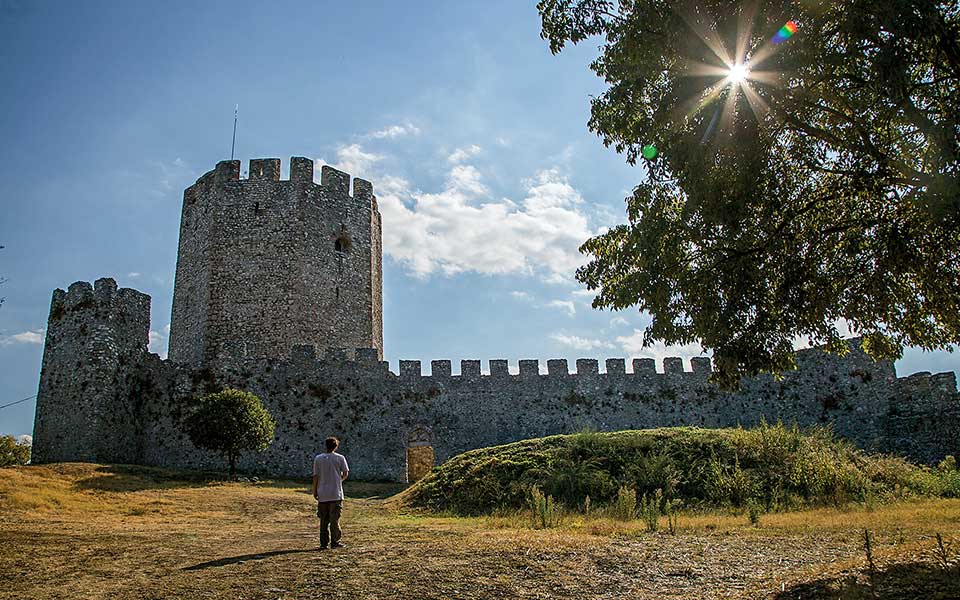
Platamon castle
© Olga Charami
Ruins with a view
Built near the Vale of Tempe on the old route connecting Thessaly to Macedonia, this once-imposing castle appears to date back originally to ancient times, but it acquired its present form – with its dramatic 18-meter octagonal tower – during the Byzantine period.
Take the cobblestone path up the hill and wander around the ruins of a settlement that once included churches, homes and various outbuildings. The view from the ramparts is amazing, but mind your step on the climb up.
Tel. (+30) 23520.444.70
Admission: €2; hours vary depending on the time of year

Ktima Bellou
© Olga Charami
A natural haven
This eco-friendly guesthouse is located on a 4.5-hectare estate that produces herbs – including Olympus mountain tea (ironwort) – strawberries, walnuts, potatoes, beans and other foodstuffs supplying the estate’s restaurant kitchen and other on-site ventures.
The Rosa damascena roses, for instance, are used to make a sweet preserve, but they’re also processed for their essential oils at the distillery on the estate, which produces other preserves and liqueurs as well. In the summer, guests can learn about beekeeping, too, as the estate keep hives.
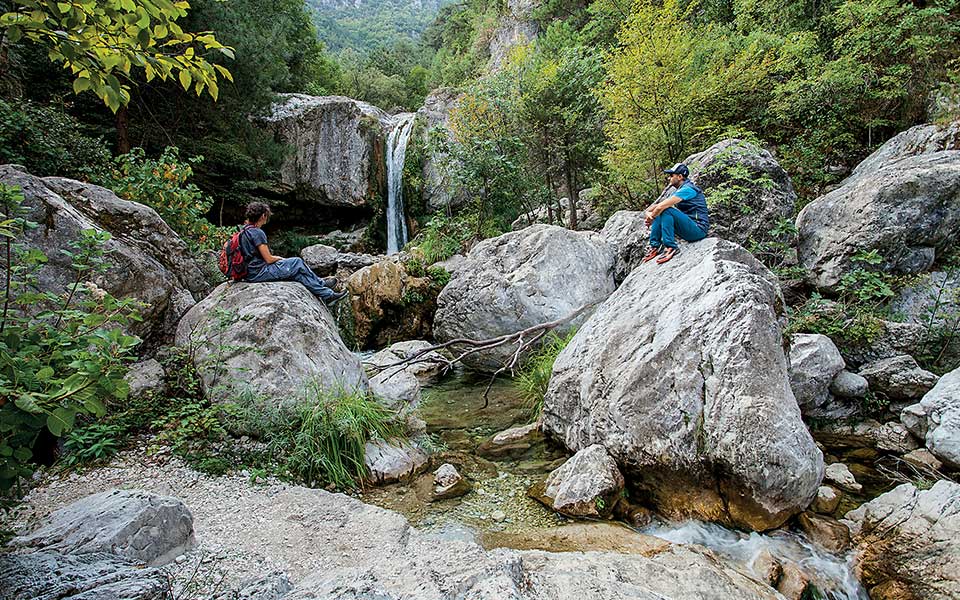
Orlias
© Olga Charami
Overlooked beauties
There are two delightful spots on the outskirts of the village of Vrontos that are often overlooked by visitors: the canyon of Orlias and the Church of the Aghia Kori, both with gorgeous waterfalls and pools, perfect for a refreshing dip in the summer and on hot autumn and spring days.
For Orlias, follow the signposts for the Koromilia Refuge. The first waterfall is a 10-minute hike from the Chapel of Aghios Konstantinos, though the most impressive one is an additional 50 minutes or so away at Kokkinos Vrachos. This is also a great spot for canyoning and rappelling.
The waterfall near the Church of Aghia Kori is a 10-minute hike from the parking area. You can double back the same way or take a circular one-hour trek instead. Many locals believe the spring by the church is miraculous and make frequent pilgrimages here, although the area is not properly maintained.
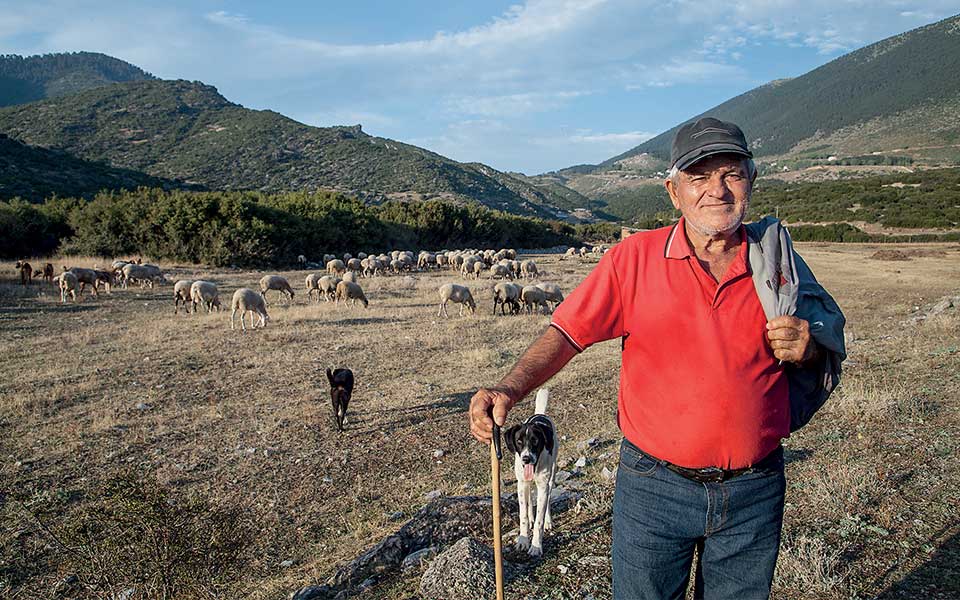
A shepherd with his flock
© Olga Charami
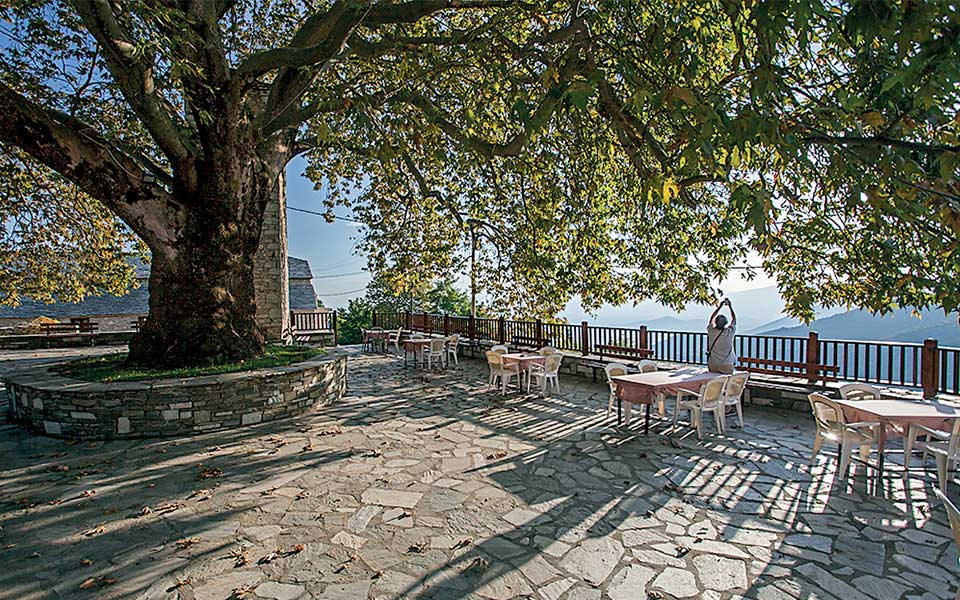
The village square at Kokkinopilos
© Olga Charami
Woodland adventure
The village of Kokkinopilos is the gateway to the mountain’s western flank. Here, you can relax on the huge main square with its massive plane tree, visit the restored Church of Aghia Paraskevi, have a meal at the only taverna that’s open all year round and spend the night at one of its guesthouses.
Walking and hiking aren’t the only activities available; this area is also perfect for a bit of off-road 4×4 adventure in the woods. Should you choose to get behind the wheel, a 20km gravel road takes you through dense forests of beech, black pine and fir trees to the area of Xerolakki and the Naoum Stream.
This spot looks out at Mikra and Megala Kazania (or “Small and Big Cauldrons”), so named after the effect produced by the clouds trapped between two steep cliffs, and at the three summits of Mt Olympus: Mytikas, Skolio and Stefani. It’s also the starting point for trails leading to the Plateau of the Muses.
Just an hour from Athens, Kea...
From ancient healing sanctuaries to legendary...
Discover festivals, beaches, food, and hidden...
When the summer crowds depart, Greece’s...